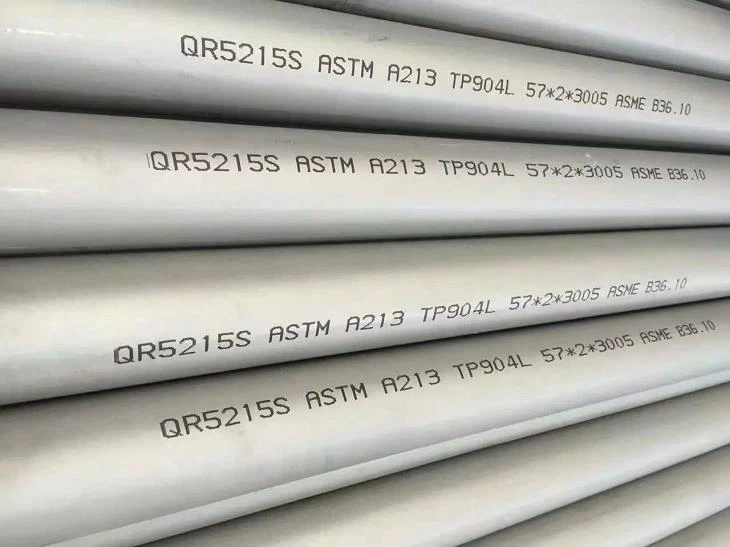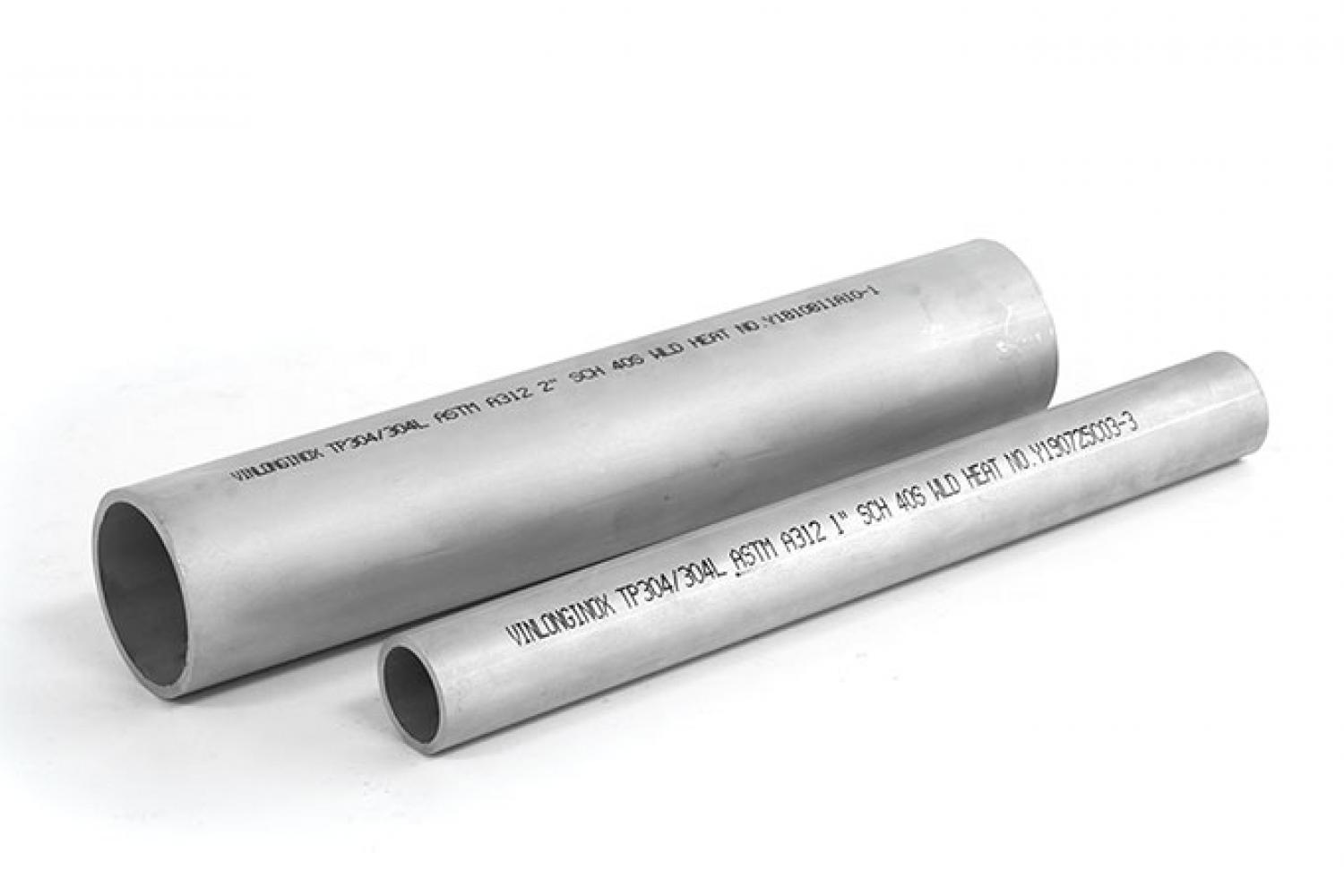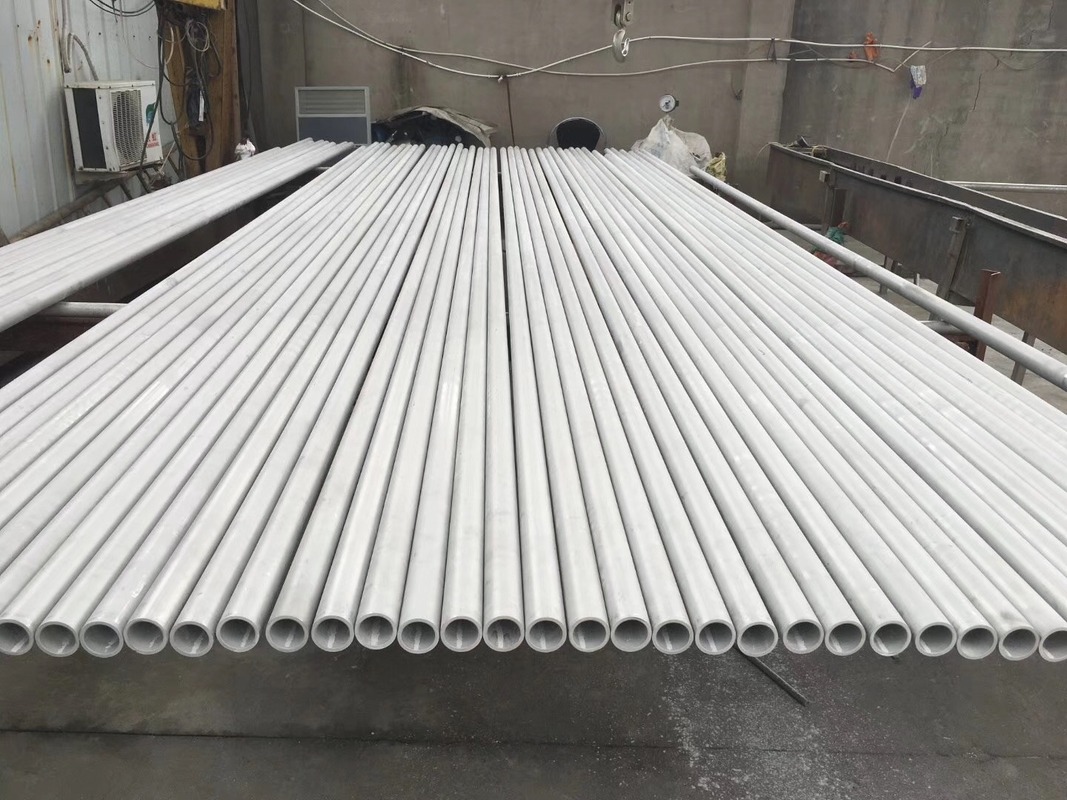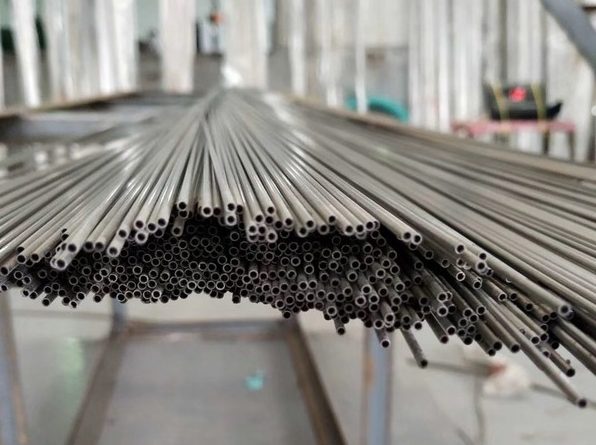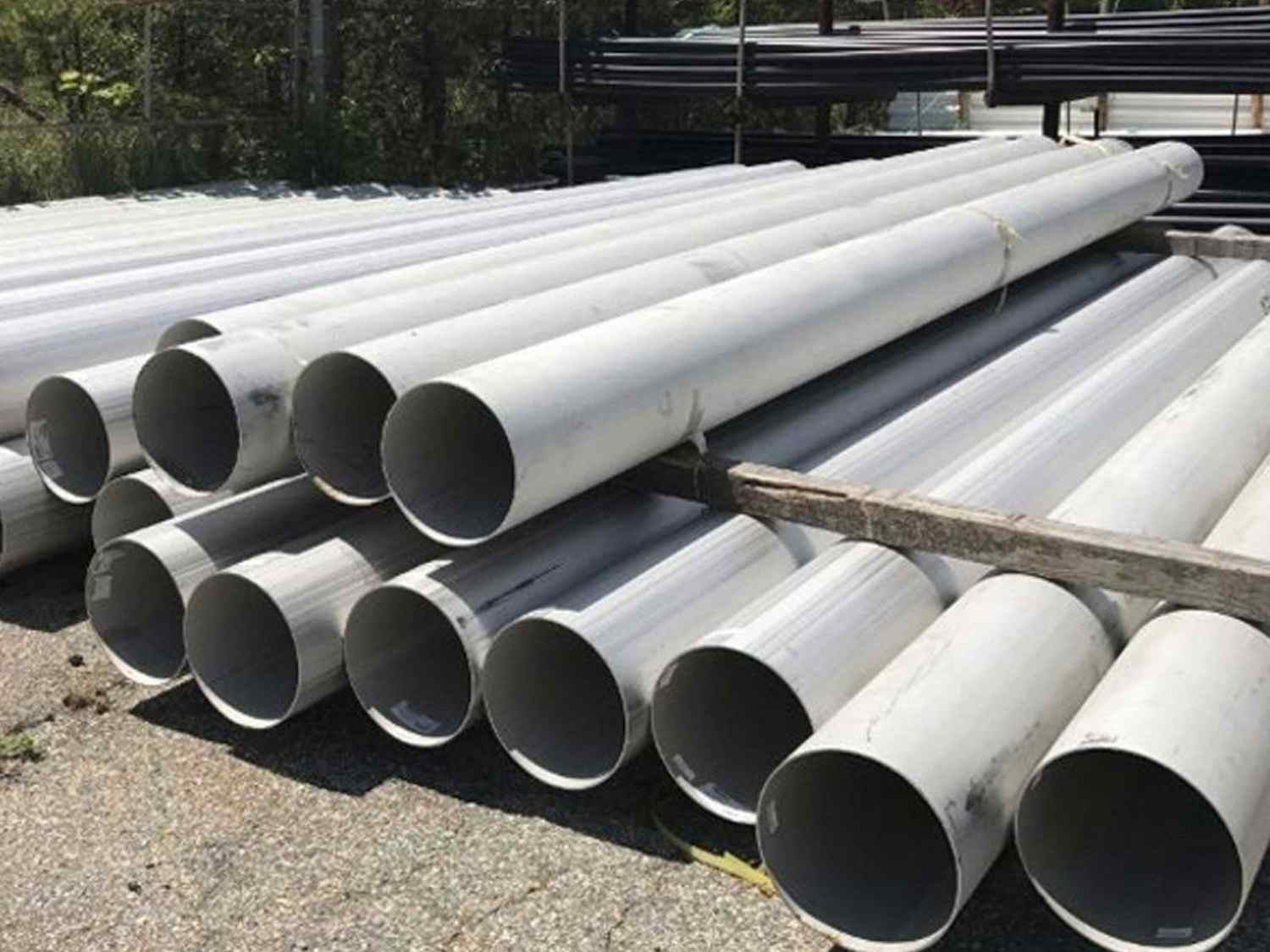316 Stainless Steel Pipe for Juice and Food Processing
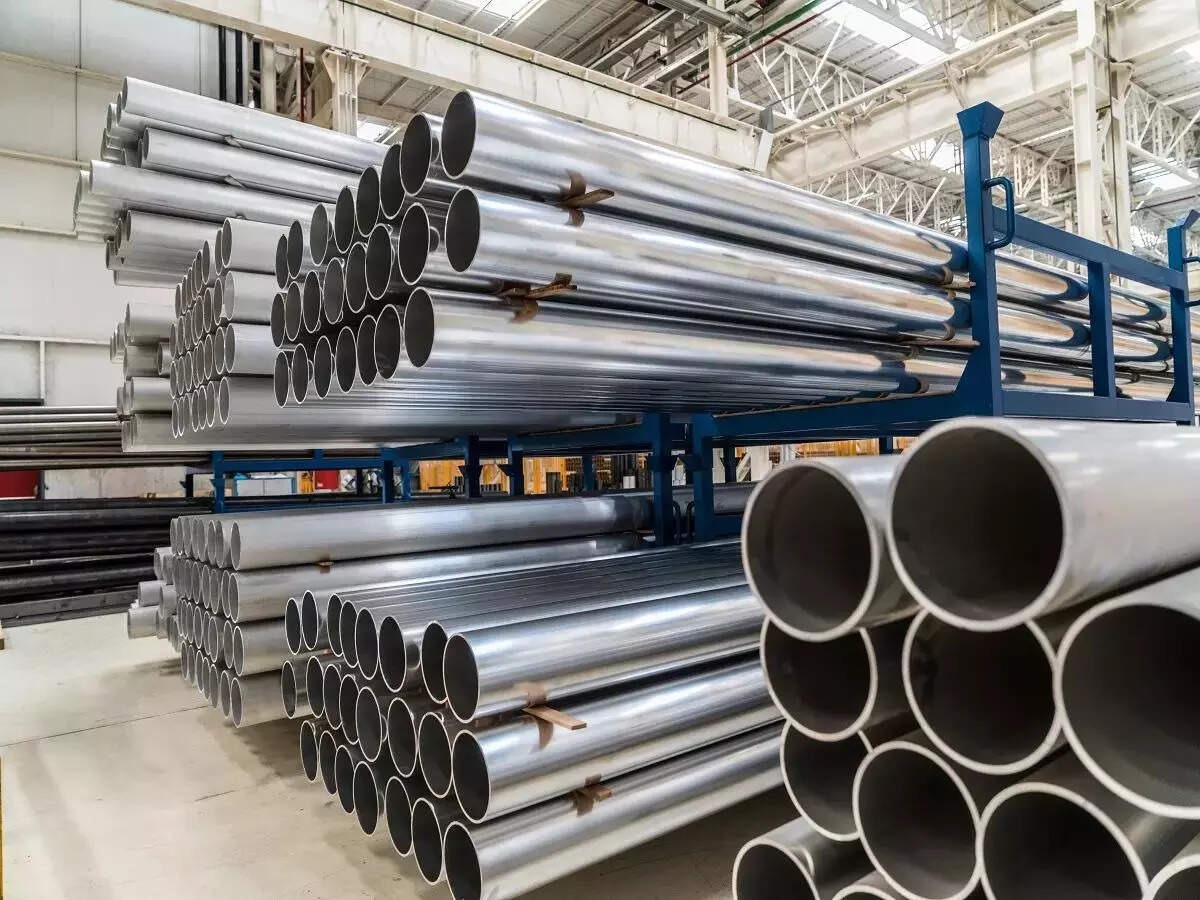
Technical Product Overview: 316 Stainless Steel Pipes for Juice and Food Processing Applications
Introduction
In the highly specialized field of juice and food manufacturing, the selection of materials for processing equipment is paramount to ensuring product safety, operational efficiency, and compliance with stringent regulatory standards. Among the myriad of materials available, 316 stainless steel pipes have emerged as the gold standard for food-grade applications, owing to their exceptional corrosion resistance, durability, and hygienic properties. These pipes are specifically engineered to withstand the rigorous demands of food processing environments, including exposure to acidic juices, aggressive cleaning agents, and high-pressure systems, all while maintaining the purity and integrity of the final product. This comprehensive technical overview delves into the material composition, mechanical and physical properties, dimensional specifications, manufacturing processes, and a comparative analysis of 316 stainless steel pipes against other materials commonly used in the industry. By providing detailed insights supported by tables, this article aims to elucidate why 316 stainless steel pipes are the optimal choice for juice and food processing factories. Our company specializes in producing high-quality 316 stainless steel pipes tailored to meet the unique requirements of these facilities, ensuring reliability and compliance with global standards. The pipes’ ability to resist corrosion from organic acids, such as those found in citrus or tropical fruit juices, and their compatibility with cleaning-in-place (CIP) systems make them indispensable in modern food production. Furthermore, their versatility in terms of sizes, finishes, and manufacturing methods allows for seamless integration into various processing stages, from raw material handling to final packaging. This article will explore these aspects in detail, providing a science-based perspective on the advantages of 316 stainless steel pipes and their critical role in ensuring food safety and operational excellence.

1. Material Composition and Properties of 316 Stainless Steel
1.1 Chemical Composition
316 stainless steel is an austenitic alloy renowned for its enhanced corrosion resistance, primarily due to the inclusion of molybdenum, which significantly improves its performance in chloride-rich and acidic environments. This characteristic makes it particularly suitable for juice and food processing, where pipelines are routinely exposed to organic acids (e.g., citric, malic, and tartaric acids) and harsh cleaning chemicals. The low-carbon variant, 316L, is often preferred in applications requiring extensive welding, as it minimizes the risk of carbide precipitation, which can lead to intergranular corrosion. The chemical composition of 316 and 316L stainless steel, as outlined in ASTM A312 and A269 standards, is carefully balanced to optimize both corrosion resistance and mechanical strength. The presence of 16–18% chromium forms a passive oxide layer that protects the material from environmental degradation, while 10–14% nickel enhances its ductility and toughness. The 2–3% molybdenum content is the defining feature, providing superior resistance to pitting and crevice corrosion compared to other stainless steel grades like 304. Table 1 below details the chemical composition, highlighting the slight but critical difference in carbon content between 316 and 316L. This low carbon content in 316L (≤ 0.03%) ensures that welded pipes maintain their corrosion resistance, making them ideal for complex piping systems in juice processing plants. Additionally, elements like manganese, silicon, phosphorus, and sulfur are tightly controlled to ensure consistency and performance. This precise alloy composition not only enhances the material’s suitability for food-grade applications but also ensures compliance with regulatory standards such as those set by the FDA and 3-A Sanitary Standards, guaranteeing that the pipes are safe for direct food contact.
| Element | 316 (% Weight) | 316L (% Weight) |
|---|---|---|
| Carbon (C) | ≤ 0.08 | ≤ 0.03 |
| Chromium (Cr) | 16.0–18.0 | 16.0–18.0 |
| Nickel (Ni) | 10.0–14.0 | 10.0–14.0 |
| Molybdenum (Mo) | 2.0–3.0 | 2.0–3.0 |
| Manganese (Mn) | ≤ 2.0 | ≤ 2.0 |
| Silicon (Si) | ≤ 1.0 | ≤ 1.0 |
| Phosphorus (P) | ≤ 0.045 | ≤ 0.045 |
| Sulfur (S) | ≤ 0.03 | ≤ 0.03 |
| Iron (Fe) | Balance | Balance |
Source: ASTM A312/A269 Standards
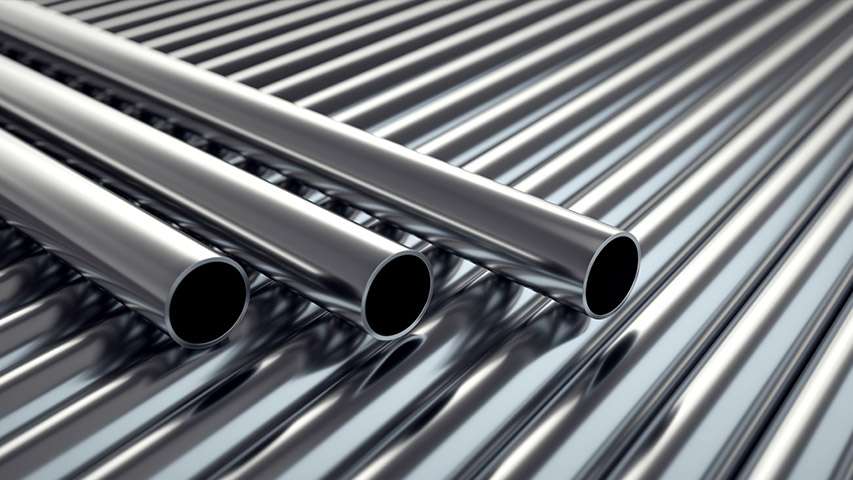
1.2 Mechanical Properties
The mechanical properties of 316 stainless steel make it an ideal material for the demanding conditions of juice and food processing, where pipelines must endure high pressures, temperature fluctuations, and mechanical stresses. These properties include excellent tensile strength, yield strength, and elongation, ensuring that the pipes can withstand the rigors of continuous operation without deformation or failure. The material’s toughness, even at cryogenic temperatures, is particularly valuable for juice processing systems that involve cold storage or chilling processes. According to ASTM standards, 316 stainless steel exhibits a tensile strength ranging from 515 to 690 MPa, with a minimum yield strength of 205 MPa, ensuring robust performance under pressure. The low-carbon 316L variant has slightly lower strength (485–620 MPa tensile, ≥ 170 MPa yield) due to its reduced carbon content, but this enhances its weldability, making it suitable for intricate piping configurations. Both grades offer excellent elongation (≥ 40%), allowing the material to deform without fracturing, which is critical for applications involving thermal expansion or mechanical vibration. The hardness of 316 stainless steel, with a maximum Brinell value of 217, ensures resistance to surface wear while maintaining a smooth, hygienic finish. Table 2 provides a detailed comparison of these properties, highlighting the slight differences between 316 and 316L. These mechanical characteristics, combined with the material’s non-magnetic austenitic structure, make 316 stainless steel pipes versatile for a range of processing conditions, from high-pressure pasteurization to low-temperature storage. Their ability to maintain structural integrity across a wide temperature range (from -196°C to 870°C) ensures reliability in both hot and cold processing stages, making them a cornerstone of modern food manufacturing systems.
| Property | 316 (Typical) | 316L (Typical) |
|---|---|---|
| Tensile Strength (MPa) | 515–690 | 485–620 |
| Yield Strength (MPa) | ≥ 205 | ≥ 170 |
| Elongation (%) | ≥ 40 | ≥ 40 |
| Hardness (Brinell, HB) | ≤ 217 | ≤ 217 |
| Density (g/cm³) | 8.0 | 8.0 |
| Modulus of Elasticity (GPa) | 193 | 193 |
Source: ASTM A312/A269 Standards
1.3 Physical Properties
The physical properties of 316 stainless steel further enhance its suitability for juice and food processing applications, where pipelines must perform reliably under diverse environmental conditions. Its thermal conductivity (16.3 W/m·K at 100°C) allows efficient heat transfer during processes like pasteurization or sterilization, while its specific heat capacity (500 J/kg·K) ensures stability during temperature changes. The material’s coefficient of thermal expansion (15.9 µm/m·°C) is relatively low, minimizing dimensional changes during heating or cooling cycles, which is critical for maintaining tight seals in piping systems. Additionally, 316 stainless steel’s high melting point (1375–1400°C) ensures it can withstand high-temperature cleaning processes, such as steam-in-place (SIP) systems, without degradation. The material’s non-magnetic austenitic structure eliminates the risk of magnetic interference in sensitive processing equipment, a key consideration in automated food production lines. Its electrical resistivity (740 nΩ·m) supports its use in environments where electrical insulation is necessary. Table 3 summarizes these properties, illustrating why 316 stainless steel is a versatile material for food-grade applications. These characteristics enable the pipes to handle the thermal and mechanical stresses encountered during cleaning-in-place (CIP) processes, high-pressure transfers, and temperature fluctuations inherent in juice production. The combination of physical and mechanical properties ensures that 316 stainless steel pipes maintain their structural integrity and hygienic performance, even in the most challenging conditions, such as exposure to acidic juices or aggressive sanitizing agents. This reliability translates to reduced maintenance costs and enhanced operational efficiency, making 316 stainless steel the material of choice for modern food processing facilities aiming to meet stringent quality and safety standards.
| Property | Value |
|---|---|
| Melting Point (°C) | 1375–1400 |
| Thermal Conductivity (W/m·K) | 16.3 (at 100°C) |
| Specific Heat Capacity (J/kg·K) | 500 |
| Coefficient of Thermal Expansion (µm/m·°C) | 15.9 (0–100°C) |
| Electrical Resistivity (nΩ·m) | 740 |
Source: ASTM Standards and Material Data Sheets
2. Dimensional Specifications
2.1 Standard Sizes and Schedules
316 stainless steel pipes for juice and food processing are available in a wide range of sizes and schedules to accommodate the diverse requirements of modern production facilities. These specifications are defined by ASME B36.19M, which outlines the Nominal Pipe Size (NPS) and Schedule (SCH) designations for outer diameter (OD) and wall thickness. Common schedules include SCH 5S, 10S, 40S, and 80S, with SCH 10S and 40S being the most widely used in food processing due to their optimal balance of strength, weight, and cost. For example, a 2-inch NPS pipe with SCH 40S has an OD of 60.3 mm and a wall thickness of 3.91 mm, providing sufficient strength for high-pressure juice transfer while remaining lightweight for ease of installation. Table 4 lists common dimensions for these pipes, illustrating the range of options available. Seamless pipes are typically available from 1/8” to 24” NPS, while welded pipes can be produced in larger diameters, up to 100” for electric fusion welded (EFW) types. Standard pipe lengths are 6 meters (20 feet) or 12 meters (40 feet), with custom lengths available to suit specific project needs. This flexibility ensures that 316 stainless steel pipes can be integrated into various stages of juice production, from small-scale processing lines to large, automated systems. The precise dimensional control during manufacturing guarantees tight tolerances, which are essential for maintaining leak-free connections and ensuring compatibility with fittings and valves in food-grade systems. These pipes are designed to withstand the mechanical stresses of high-pressure transfers and the thermal cycles of cleaning processes, making them a reliable choice for long-term use in juice and food manufacturing environments.
| NPS (Inches) | OD (mm) | SCH 5S WT (mm) | SCH 10S WT (mm) | SCH 40S WT (mm) | SCH 80S WT (mm) |
|---|---|---|---|---|---|
| 1/2 | 21.3 | 1.65 | 2.11 | 2.77 | 3.73 |
| 3/4 | 26.7 | 1.65 | 2.11 | 2.87 | 3.91 |
| 1 | 33.4 | 1.65 | 2.77 | 3.38 | 4.55 |
| 1-1/2 | 48.3 | 1.65 | 2.77 | 3.68 | 5.08 |
| 2 | 60.3 | 1.65 | 2.77 | 3.91 | 5.54 |
| 3 | 88.9 | 2.11 | 3.05 | 5.49 | 7.62 |
| 4 | 114.3 | 2.11 | 3.05 | 6.02 | 8.56 |
| 6 | 168.3 | 2.77 | 3.40 | 7.11 | 10.97 |
| 8 | 219.1 | 2.77 | 3.76 | 8.18 | 12.70 |
Source: ASME B36.19M
2.2 Sanitary Tubing Specifications
In juice and food processing, sanitary tubing, as specified by ASTM A270, is often preferred due to its polished surface finish, which minimizes bacterial adhesion and facilitates cleaning. Unlike standard pipes, sanitary tubing is designed specifically for hygienic applications, with outer diameters (OD) ranging from 1/2” to 8” and wall thicknesses typically between 1.65 mm and 2.77 mm. These tubes are commonly used in direct food contact applications, such as transferring fruit juices, dairy products, or other liquid foods. The polished finish, typically #4 (180–320 grit) or electropolished, ensures compliance with sanitary standards like 3-A, FDA, and EHEDG, making the tubing ideal for maintaining product purity. Table 5 outlines common sanitary tubing dimensions and their applications. For instance, 2-inch OD tubing with a 1.65 mm wall thickness is widely used in juice and dairy pipelines, while larger 6-inch OD tubing is suited for bulk transfer systems in high-volume production. The smooth, mirror-like finish reduces the risk of biofilm formation and ensures efficient flow of viscous liquids like fruit concentrates. The manufacturing process for sanitary tubing emphasizes precision and cleanliness, with rigorous quality controls to eliminate surface imperfections. These tubes are often supplied with certifications verifying compliance with food safety standards, ensuring that manufacturers can trust their performance in critical applications. The availability of various sizes and finishes allows for customization to meet specific process requirements, whether for small-scale artisanal juice production or large-scale industrial operations. By choosing sanitary tubing made from 316 stainless steel, manufacturers can achieve both operational efficiency and regulatory compliance, ensuring the highest standards of hygiene and product quality.
| OD (Inches) | OD (mm) | Wall Thickness (mm) | Typical Applications |
|---|---|---|---|
| 1/2 | 12.7 | 1.65 | Small-scale juice lines |
| 1 | 25.4 | 1.65 | Beverage transfer lines |
| 1-1/2 | 38.1 | 1.65 | Medium-scale processing |
| 2 | 50.8 | 1.65 | Juice and dairy pipelines |
| 3 | 76.2 | 1.65 | Large-scale food processing |
| 4 | 101.6 | 2.11 | High-volume juice production |
| 6 | 152.4 | 2.77 | Bulk transfer systems |
Source: ASTM A270
3. Manufacturing Processes
3.1 Seamless Pipes
Seamless 316 stainless steel pipes are manufactured through a sophisticated process that ensures a uniform structure without welds, making them ideal for high-pressure and high-corrosion environments in juice and food processing. The production begins with a solid 316 stainless steel billet, which is heated to 1200–1300°C to make it malleable. The heated billet is then perforated to create a hollow tube, which is subsequently hot-rolled or cold-drawn to achieve the desired dimensions and wall thickness. Hot rolling is used for larger diameters, while cold drawing provides superior dimensional accuracy and surface finish for smaller pipes. After forming, the pipes undergo annealing, a heat treatment process that relieves internal stresses and enhances corrosion resistance by recrystallizing the austenitic structure. The final steps include pickling and passivation, where the surface is cleaned to remove oxides and impurities, resulting in a smooth, corrosion-resistant finish. Quality control is rigorous, with hydrostatic testing, ultrasonic inspection, and dimensional checks ensuring that the pipes meet ASTM A312 and A269 standards. Seamless pipes are particularly valued in juice processing for their ability to withstand high pressures and aggressive cleaning agents without the risk of seam failure. Their uniform structure also minimizes the risk of contamination, as there are no crevices or welds where bacteria could accumulate. This makes seamless 316 stainless steel pipes the preferred choice for critical applications, such as pasteurization lines or high-pressure juice transfer systems, where reliability and hygiene are paramount. The manufacturing process, while more costly than welded pipe production, delivers superior performance and longevity, making seamless pipes a worthwhile investment for food processing facilities aiming to maintain high standards of quality and safety.
3.2 Welded Pipes
Welded 316 stainless steel pipes offer a cost-effective alternative to seamless pipes, particularly for larger diameters and lower-pressure applications in juice and food processing. The manufacturing process begins with a flat 316 stainless steel plate or strip, which is rolled into a cylindrical shape using automated forming equipment. The longitudinal seam is then welded using advanced techniques such as Tungsten Inert Gas (TIG) or plasma welding, which ensure a strong, consistent bond. Post-weld annealing is performed to relieve residual stresses and restore the material’s corrosion resistance, particularly in the heat-affected zone. The pipes are then polished to achieve a smooth, hygienic surface suitable for food-grade applications. Non-destructive testing, such as X-ray or dye penetrant inspection, verifies the integrity of the weld, ensuring no defects that could compromise performance. Welded pipes are available in a wide range of sizes, from small-diameter tubing to large-diameter pipes up to 100 inches, making them versatile for various processing needs. While welded pipes may have a slightly lower pressure rating than seamless pipes, advancements in welding technology have significantly improved their reliability, making them suitable for most food processing applications. Their cost-effectiveness makes them an attractive option for large-scale juice production facilities, where extensive piping networks are required. The polished surface finish, typically #4 or electropolished, ensures compliance with sanitary standards, minimizing the risk of bacterial contamination. By combining affordability with high performance, welded 316 stainless steel pipes provide an excellent solution for manufacturers seeking to balance cost and quality while maintaining the hygiene and durability required in food processing environments.
3.3 Surface Finishing
The surface finish of 316 stainless steel pipes is a critical factor in their suitability for juice and food processing, as it directly impacts hygiene, cleanability, and corrosion resistance. In food-grade applications, a smooth, non-porous surface is essential to prevent bacterial adhesion and ensure thorough cleaning during CIP processes. Several surface finishing options are available, each tailored to specific requirements. The mill finish, as-produced during manufacturing, is suitable for non-sanitary applications but is rarely used in food processing due to its rough texture. The #4 polish, achieved through mechanical polishing with 180–320 grit abrasives, provides a smooth, hygienic surface that meets 3-A and FDA standards, making it ideal for most juice and food pipelines. For high-purity applications, such as ultra-filtered juice or pharmaceutical-grade food products, electropolishing is preferred. This electrochemical process removes a thin layer of material, creating an ultra-smooth, mirror-like finish that enhances corrosion resistance and minimizes bacterial adhesion. Electropolished surfaces also reduce friction, improving the flow of viscous liquids like fruit concentrates. The choice of finish depends on the specific application, with more demanding processes requiring higher levels of polish. Quality control during surface finishing includes surface roughness measurements (e.g., Ra values) to ensure compliance with sanitary standards. For example, a typical Ra value for food-grade tubing is ≤ 0.8 µm, ensuring a surface that is both hygienic and easy to clean. These finishing techniques, combined with the inherent properties of 316 stainless steel, ensure that the pipes meet the stringent requirements of food safety regulations while providing long-term reliability in harsh processing environments.
4. Comparative Analysis with Other Materials
To fully appreciate the advantages of 316 stainless steel pipes in juice and food processing, it is essential to compare them with other materials commonly used in the industry, such as 304 stainless steel, carbon steel, and plastic (e.g., PVC). Each material has its strengths and limitations, but 316 stainless steel consistently outperforms alternatives in terms of corrosion resistance, hygiene, and durability. Table 6 provides a detailed comparison across key properties. Compared to 304 stainless steel, 316 offers superior resistance to pitting and crevice corrosion due to its molybdenum content, making it better suited for handling acidic juices and chloride-based cleaning agents. While 304 is more cost-effective, its susceptibility to corrosion in chloride-rich environments limits its use in demanding applications. Carbon steel, while inexpensive, is highly prone to rust and corrosion, especially in the presence of moisture or acidic substances, making it unsuitable for direct food contact. Its rough surface also harbors bacteria, posing a contamination risk. Plastic pipes, such as PVC, are lightweight and low-cost but have significant drawbacks, including the potential to leach chemicals into food products and a limited lifespan due to degradation under high temperatures or UV exposure. In contrast, 316 stainless steel’s non-reactive, non-porous surface ensures product purity and compliance with FDA and 3-A standards. Its durability, with a service life of 25–75 years, far exceeds that of carbon steel (5–15 years) or plastic (10–20 years), reducing maintenance costs and downtime. Additionally, 316 stainless steel can withstand a wide temperature range (-196°C to 870°C) and high-pressure ratings, making it versatile for various processing conditions. This comparative analysis underscores why 316 stainless steel pipes are the preferred choice for juice and food manufacturers seeking reliability, safety, and regulatory compliance.
| Property/Material | 316 Stainless Steel | 304 Stainless Steel | Carbon Steel | PVC (Plastic) |
|---|---|---|---|---|
| Corrosion Resistance | Excellent (chloride/acid resistance) | Good (less resistant to chlorides) | Poor (prone to rust) | Good (but leaches chemicals) |
| Hygienic Properties | Excellent (non-porous, easy to clean) | Good (slightly less smooth) | Poor (rusts, harbors bacteria) | Moderate (risk of chemical leaching) |
| Durability (Years) | 25–75 | 20–50 | 5–15 | 10–20 |
| Temperature Range (°C) | -196 to 870 | -196 to 815 | -29 to 425 | 0 to 60 |
| Pressure Rating | High (SCH 40S/80S) | High (SCH 40S/80S) | Moderate | Low |
| Cost (Relative) | High | Moderate | Low | Very Low |
| FDA/3-A Compliance | Yes | Yes | No | Limited |
5. Applications in Juice and Food Processing
316 stainless steel pipes are integral to nearly every stage of juice and food processing, providing a reliable and hygienic solution for handling sensitive products. Their versatility allows them to be used in raw material handling, where they transfer fruit pulps, concentrates, and juices from storage to processing units without contamination. In processing lines, these pipes convey liquids during critical stages such as pasteurization, homogenization, and mixing, where high temperatures and pressures are common. Their corrosion resistance ensures they can handle acidic juices, such as citrus or pineapple, without degrading, while their smooth surfaces prevent product buildup and bacterial growth. Cleaning-in-place (CIP) systems, which use aggressive chemicals and high temperatures, rely on 316 stainless steel pipes to withstand repeated sanitization cycles without corrosion or wear. In storage and distribution, these pipes maintain product integrity by preventing contamination during holding or transport. They are also widely used in bottling and packaging lines, where hygiene is paramount to ensure the final product meets consumer safety standards. Specific applications include citrus juice production, where 316L pipes resist corrosion from citric acid, and dairy processing, where they ensure hygiene in milk and yogurt pipelines. In beverage manufacturing, such as carbonated drinks or flavored water, the pipes’ high-pressure ratings and sanitary finishes make them ideal for automated systems. The ability to customize pipe sizes, finishes, and configurations allows manufacturers to tailor systems to their specific needs, whether for small-scale artisanal production or large-scale industrial operations. By providing a robust, hygienic, and compliant solution, 316 stainless steel pipes enable juice and food manufacturers to achieve operational efficiency, product quality, and regulatory compliance, ensuring consumer safety and satisfaction.
6. Compliance with Industry Standards
Compliance with international standards is a cornerstone of 316 stainless steel pipes’ suitability for juice and food processing, ensuring they meet the rigorous demands of food safety and quality assurance. The ASTM A312 standard specifies seamless and welded austenitic stainless steel pipes for high-temperature and corrosive services, ensuring that 316 pipes can handle the demanding conditions of food processing. ASTM A270, specifically for sanitary tubing, emphasizes surface finish and cleanliness, requiring a smooth, polished surface to prevent bacterial adhesion. The 3-A Sanitary Standards, widely adopted in the food industry, mandate hygienic design and cleanability, which 316 stainless steel pipes achieve through their non-porous surfaces and corrosion resistance. FDA regulations confirm that 316 stainless steel is safe for direct food contact, as it does not leach harmful substances into food products. The European Hygienic Engineering and Design Group (EHEDG) guidelines further promote hygienic engineering, with 316 stainless steel pipes meeting requirements for cleanability and durability. These standards collectively ensure that the pipes can withstand the harsh conditions of food processing, including exposure to acidic juices, high-pressure cleaning, and thermal sterilization, without compromising product safety. Manufacturers can rely on certified 316 stainless steel pipes to meet regulatory requirements in various regions, from North America to Europe and beyond. Our company ensures that all 316 stainless steel pipes are manufactured and tested to comply with these standards, with certifications provided to verify quality. This commitment to compliance not only protects consumer health but also enhances the reputation of food manufacturers by ensuring consistent, high-quality production. By choosing 316 stainless steel pipes, manufacturers can confidently meet the stringent requirements of modern food safety regulations while maintaining operational efficiency.
7. Benefits of 316 Stainless Steel Pipes in Juice and Food Processing
The use of 316 stainless steel pipes in juice and food processing offers a multitude of benefits, making them the preferred choice for manufacturers seeking reliability, hygiene, and efficiency. Their superior corrosion resistance, driven by the molybdenum content, allows them to withstand exposure to acidic juices and chloride-based cleaning agents, ensuring long-term performance without degradation. This is particularly critical in juice production, where organic acids can erode lesser materials. The hygienic properties of 316 stainless steel, characterized by its non-porous, smooth surface, minimize bacterial adhesion and facilitate thorough cleaning, reducing the risk of contamination. Electropolished finishes enhance these properties, making the pipes ideal for high-purity applications. With a service life of 25–75 years, 316 stainless steel pipes offer exceptional durability, reducing maintenance costs and downtime compared to alternatives like carbon steel or plastic. Their versatility, available in seamless and welded forms with a range of sizes and finishes, allows for customization to meet specific process requirements, from small-scale juice lines to large-scale production systems. Additionally, 316 stainless steel is 100% recyclable, supporting sustainable manufacturing practices by reducing resource consumption and waste. The pipes’ ability to withstand a wide temperature range (-196°C to 870°C) and high-pressure ratings ensures they can handle the diverse conditions of food processing, from cold storage to high-temperature sterilization. These benefits translate to improved operational efficiency, reduced lifecycle costs, and enhanced product quality, enabling manufacturers to meet consumer expectations and regulatory standards. By investing in 316 stainless steel pipes, juice and food processing facilities can achieve a balance of performance, safety, and sustainability, positioning them for long-term success in a competitive industry.
8. Recent Innovations and Trends
Recent advancements in stainless steel manufacturing and piping technology have further solidified the position of 316 stainless steel pipes as the material of choice for juice and food processing. Innovations in welding techniques, such as laser welding and automated TIG welding, have improved the quality and consistency of welded pipes, reducing the risk of seam imperfections and ensuring leak-free performance. Surface treatment technologies, including advanced electropolishing and passivation, have enhanced the corrosion resistance and hygiene of 316 stainless steel pipes, making them suitable for even the most demanding applications. Custom fabrication, enabled by 3D modeling and precision cutting, allows manufacturers to produce bespoke piping systems tailored to specific factory layouts, optimizing flow and minimizing waste. The integration of smart monitoring systems, such as IoT sensors, enables real-time tracking of pressure, temperature, and corrosion, allowing for predictive maintenance and early detection of potential issues. These sensors can alert operators to anomalies, reducing downtime and improving system reliability. Additionally, the focus on sustainability has driven the development of eco-friendly manufacturing processes, with 316 stainless steel’s recyclability aligning with global efforts to reduce environmental impact. These innovations reflect the industry’s commitment to improving efficiency, safety, and sustainability in food processing. By adopting these advanced technologies, manufacturers can enhance the performance of 316 stainless steel pipes, ensuring they meet the evolving needs of modern juice and food production. Our company remains at the forefront of these trends, incorporating cutting-edge techniques to deliver high-quality, reliable piping solutions that support the long-term success of our clients in the food industry.
9. 316 stainless steel pipes represent the pinnacle of material engineering for juice and food processing applications, offering a unique combination of corrosion resistance, hygienic properties, and durability
316 stainless steel pipes represent the pinnacle of material engineering for juice and food processing applications, offering a unique combination of corrosion resistance, hygienic properties, and durability. Their ability to withstand acidic juices, aggressive cleaning agents, and high-pressure systems makes them indispensable in ensuring product safety and operational efficiency. Compliance with international standards, such as ASTM A312, A270, 3-A, FDA, and EHEDG, guarantees that these pipes meet the stringent requirements of food safety and quality assurance. The availability of seamless and welded pipes, along with a wide range of sizes and surface finishes, allows for customization to meet the specific needs of any processing facility, from small artisanal juice producers to large-scale industrial operations. Recent innovations, including advanced welding, surface treatments, and smart monitoring, further enhance their performance, ensuring they remain at the forefront of food processing technology. The long service life of 25–75 years, combined with their recyclability, makes 316 stainless steel pipes a sustainable and cost-effective choice, reducing maintenance costs and environmental impact. Our company is committed to delivering high-quality 316 stainless steel pipes, manufactured with precision and tested to the highest standards, to support the success of juice and food manufacturers worldwide. By choosing 316 stainless steel pipes, manufacturers can achieve unparalleled reliability, hygiene, and compliance, ensuring the production of safe, high-quality products that meet consumer expectations. For more information or to request a quote, please contact us at [insert contact details]. With 316 stainless steel pipes, the future of food processing is both safe and sustainable.

